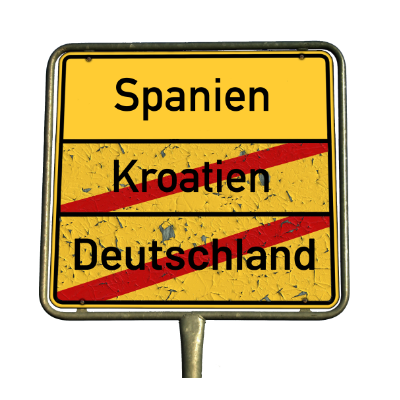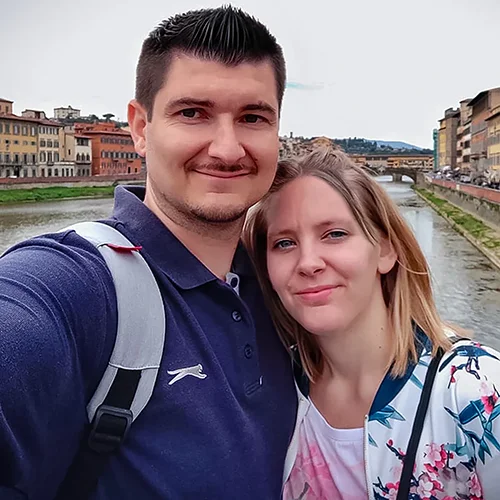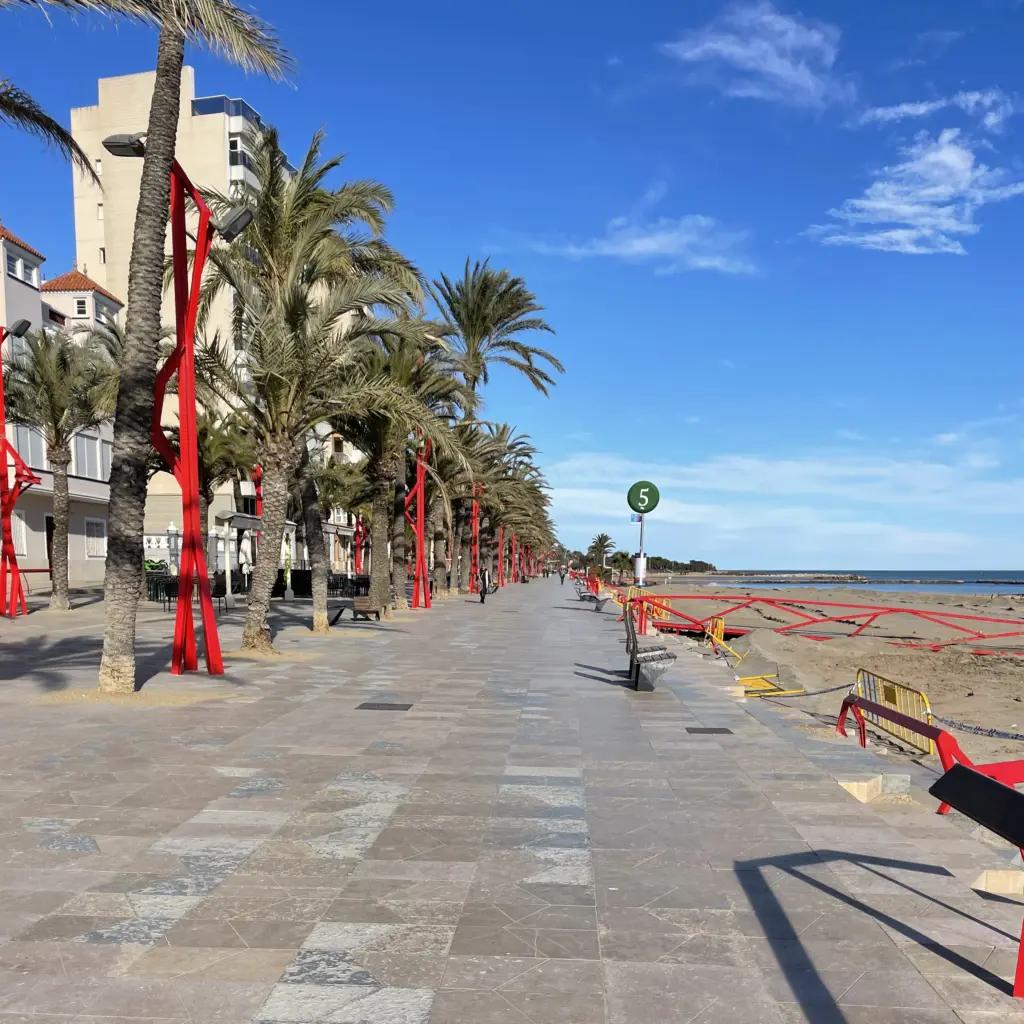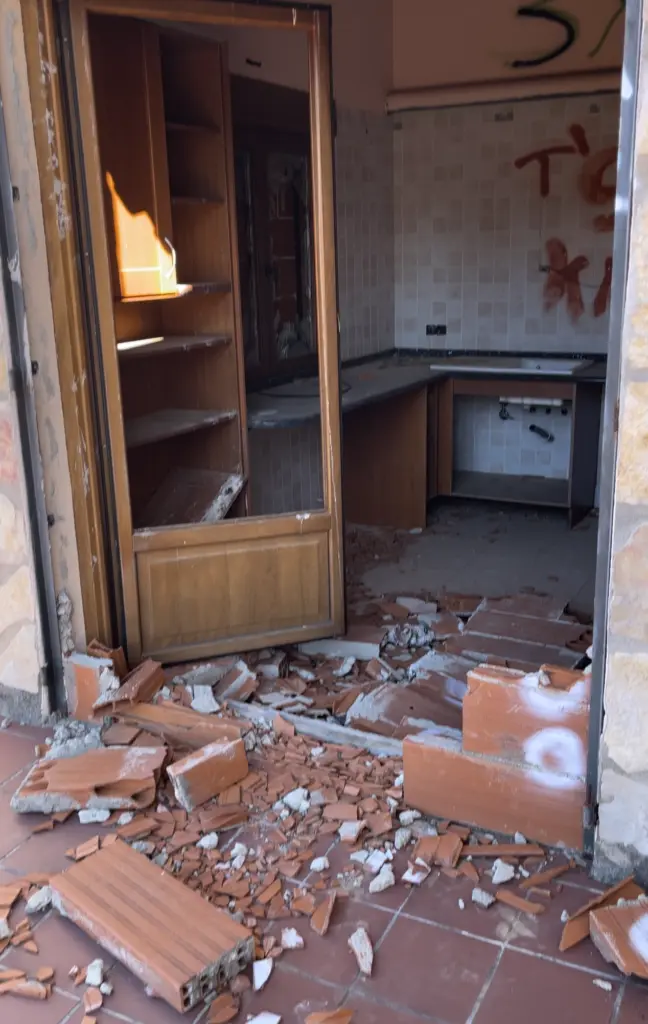Welcome to Spain – ¡HOLA ESPAÑA!
Welcome to Spain – ¡HOLA ESPAÑA!
Welcome to Spain – ¡HOLA ESPAÑA!
Welcome to Spain – ¡HOLA ESPAÑA!
4. Februar 2024
Feedback: 0
Our Journey: From Croatia to Spain

After weeks of planning, packing, and dreaming, the time had finally come: we packed our belongings and set off – from Croatia to Spain. Over 1,800 kilometers full of hope, excitement, and a touch of uncertainty lay ahead of us. The journey began at 9:30 PM Croatian time, and after about 20 hours of driving, we finally took our first real break.
What happened in between? A lot of roads, several countries, and some fascinating realizations. Our route took us through Istria, a bit of Slovenia, most of Italy, and then across France before we finally reached Spain. Along the way, we only stopped for fuel. At around 5:30 PM, we arrived in Montpellier (France), where we managed to grab a few hours of sleep.
The next morning, at 5:30 AM, we hit the road again. With about 5 hours of driving ahead of us, we covered the last stretch through France, paid around €200 in highway tolls, and finally crossed the border into Spain. The final kilometers were emotional: a mix of joy, relief, and a hint of nervousness. But one thing was certain – after this intense journey, we could finally say: We’ve made it to our destination.
Arriving: The First Steps in Spain
Arriving in Spain didn’t mean we could sit back and relax right away. Quite the opposite! There was plenty to do. Our first tasks included stocking up on groceries and ensuring we had enough drinking water.
Tap Water in Spain: Safe, but Not Always Pleasant
As in Germany, it’s said that tap water in Spain is safe to drink. According to the Spanish Ministry of Health, 98.5% of tap water is potable (as of 2021). However, not all drinking water is created equal. The chlorine smell in the water, which had already bothered us in Croatia, was no better in Spain. As a result, we continued relying on bottled mineral water, a habit we had brought over from Croatia.
Our Routine: Filtering Drinking Water
Perhaps it sounds overly cautious, but even in Germany, we ran tap water through various filters before drinking it. This little extra layer of safety gives us peace of mind, especially in a new country with unfamiliar infrastructure. If you’re sensitive to the taste or smell of water, using a filter is a great option to consider.
💡 Tip for Newcomers to Spain 💡
Even though tap water in Spain is generally safe, it’s worth checking the local quality – especially in rural areas or older buildings where plumbing or tanks might affect the water. A water test or a filter system can provide additional security and improve the taste. A little caution goes a long way, and water without a chlorine smell simply tastes better!
No Spanish, but We Made It Work
Our first property viewing brought an immediate surprise: the real estate agent, who had communicated with us in English, spoke only Spanish in person. Our knowledge of Spanish was limited to “Hola” and “Gracias,” but with a mix of gestures, Google Translate, and patience, we managed to communicate. Despite the initial hiccup, the agent was warm and welcoming, and we soon set off to visit the property, which, as promised, was difficult to find.
A Warm Welcome Despite the Language Barrier
At the property, we were greeted by an older couple who welcomed us with great warmth and proudly gave us a tour of the house. The language barrier? Not an issue! Their enthusiasm for showing us the highlights of the house made it easy to follow along. Unfortunately, the property, with nearly two hectares of land, was far too remote and large for our needs. What would we do with so much land?
Despite this, the visit was a positive experience. For the first time, we felt like serious buyers, not like “clueless foreigners” – thanks to the owners’ kindness and the agent’s support. While this house wasn’t the right one for us, it marked the beginning of our dedicated property search in Spain.
Is Everything Golden in Spain?
Spain may have its perks – like the sea and the climate – but it also comes with its share of challenges. Another property we found online seemed promising at first glance. However, before we could even schedule a viewing, the agent called to warn us about the property’s terrible condition – vandalism was the key issue.
Curious but skeptical, we decided to see it for ourselves. When we arrived, the state of the house confirmed her description: broken windows, smashed doors, and destroyed interiors. It looked like the work of people with too much time on their hands. We were shocked by the lack of respect for someone else’s property.
llegal Occupations: A Serious Issue in Spain
This experience brought us face-to-face with a significant issue in Spain: illegal occupations, commonly referred to as Okupas. The Spanish constitution enshrines the „right to dignified housing,“ which is often cited by Okupas to justify their actions. While social housing is scarce, countless vacation homes remain empty. According to the Ministry of the Interior, approximately 3,900 crimes related to house occupations were recorded in 2023. Though this represents a slight decrease from the previous year, the problem remains pressing.
In many cases, house occupations range from desperate families seeking shelter to organized groups using vacant properties for illegal activities. This stark reality added a sobering layer to our quest for a home in Spain.
The First 48 Hours Are Crucial
If an occupation isn’t reported to the police within the first 48 hours, the process becomes complicated. Initially, we naively thought cutting off electricity or water would be enough to make the occupiers leave. However, our research quickly revealed that this is considered coercion under Spanish law and is strictly prohibited.
The Official Route or „Desokupación“
This leaves property owners with two options: filing an eviction lawsuit or hiring specialized „Desokupación“ firms. These companies claim to use professional conflict resolution and often employ former bouncers, martial artists, rugby players, or even prison guards. What methods they actually use, however, remains unclear.
Why Is This Problem So Prevalent in Spain?
Our research suggests that the main culprit is the skyrocketing real estate prices, driven by tourism. Many locals can no longer afford the rising rent, a problem that sounds all too familiar.
Desperate families or individuals often become Okupas to avoid homelessness. In most cases, these occupations are peaceful, as the occupants are simply seeking shelter. In cities like Palma de Mallorca, attempts are being made to address the issue by restricting the use of apartments in multi-family buildings for touristic purposes – a step towards improving the housing situation for locals.
A Guide for Okupas: A Curious Problem in Spain
The most absurd and alarming aspect of this issue? Detailed guides on how to successfully occupy a house, freely available on the internet. These illustrated manuals explain step by step how to break locks and move in unnoticed, highlighting the extent of the problem.
Even more concerning are cases where houses are occupied by organized groups who use them as drug hubs or even rent or sell them illegally. This mix of absurdity and criminality was a shocking part of the Spanish real estate landscape we hadn’t anticipated.
Conclusion: Spain – A Land of Contrasts
Our first days in Spain were a mix of positive experiences and unexpected challenges. Despite the hurdles, our excitement for this Mediterranean country remains unshaken. Every adventure comes with its ups and downs – and we’re ready to face them all.
That was just a small insight into our adventure. If you want to find out more about our journey, check out our post The Key is to Decide . We’d love you to continue following us – there’s still so much to discover!

Wir sind zwei deutsche Auswanderer und auf emigres-life nehmen wir Dich mit auf unsere Reise in ein neues Leben.
In unserem Projekt schwingt das Pendel meist in Richtung stressig oder chaotisch und weniger in Richtung tiefenentspannt.
Wenn du also wissen willst, in welches Fettnäpfchen wir als nächstes treten oder welche Hürden vor uns liegen und wie wir sie überwinden, dann bleib dran.
Nächster Blogpost
Willkommen in Spanien – ¡HOLA ESPAÑA!



 Pin it!
Pin it!

